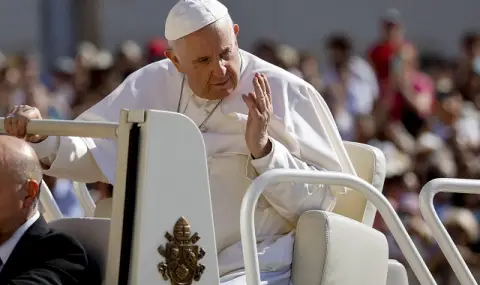The birth name of Pope Francis, who died this morning, was Jorge Mario Bergoglio. He was born on December 17, 1936 in Buenos Aires, Argentina, to an Italian immigrant, a railway worker, and was one of five children in the family - three boys and two girls. His family originated from Piedmont, near Asti in northern Italy. Jorge Mario Bergoglio graduated in chemistry, then chose the path of worship and entered the diocesan seminary in Villa Devoto. On March 11, 1958, he entered the "Society of Jesus" (the Jesuit order). As a young man, at the age of 21, he underwent surgery to remove a large part of one of his lungs, which had become infected.
He graduated in humanities in Chile and in 1963 returned to Argentina, where he graduated from the College of Saint Joseph in San Miguel with a degree in philosophy. From 1964 to 1965, he taught literature and psychology at the College of the Immaculate Conception in Santa Fe, and in 1966, he was a teacher of the same subjects at the College of the Most Holy Redeemer in Buenos Aires. From 1967 to 1970 studied theology and received a diploma from the "Saint Joseph" College.
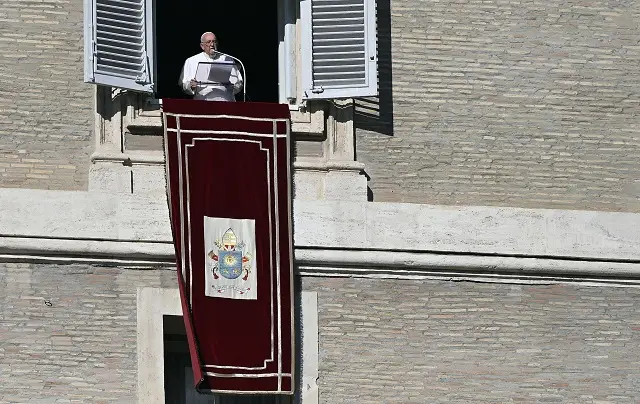
In 1969 he was ordained a priest. In 1970 he held various positions in the Jesuit order of Argentina. In the period 1980-1986 he was rector of the Faculty of Philosophy and Theology of the "San José" College in San Miguel. After that he lived for some time in Spain and Germany. After obtaining his doctorate, he returned to Argentina and served in the archdiocese of Cordoba. In 1992 was appointed auxiliary bishop of Buenos Aires and ordained bishop. In June 1997, he became coadjutor (bishop with the right to inherit a diocese) to the Archbishop of Buenos Aires, and in February 1998, he became Archbishop of Buenos Aires, the first Jesuit to hold such a high position, and bishop of the Eastern Rite Catholics in Argentina. Deeply loved in his diocese, he crisscrossed it by metro and bus during his fifteen years as bishop there. "My flock is the poor and I am one of them," the future Pope Francis said more than once, explaining his decision to live in a simple apartment and prepare his own dinner. He always advised his priests to show mercy and apostolic courage, and to keep their doors open to everyone.
In February 2001, he was created cardinal by Pope John Paul II with the title of Cardinal-Priest of the Church of "San Roberto Bellarmine". He was a member of the Congregation for the Clergy, the Congregation for Divine Worship and the Discipline of the Sacraments, the Congregation for Institutes of Consecrated Life and Societies of Apostolic Life, as well as a member of the Commission for Latin America and the Pontifical Council for the Family. From 2005 to 2011, he was president of the Episcopal Conference of the Catholic Church in Argentina. He speaks fluent Italian and German.
On March 13, 2013 76-year-old Argentine Cardinal Jorge Mario Bergoglio, Archbishop of Buenos Aires, has been elected the 266th Pope, choosing the papal name Francis. He is the first Pope from the Americas, the first member of the Jesuit Order of the See of Saint Peter and the first Pope named after Saint Francis of Assisi. At present, Latin America is home to 42 percent of the world's 1.2 billion Catholics, making it the largest Catholic bloc. By comparison, Catholics in Europe make up 25 percent of the world's Catholic population.
"I am a great sinner, but I trust in God's mercy and patience, and in suffering I accept /to become Pope/," said the Archbishop of Buenos Aires Jorge Mario Bergoglio, when asked by the cardinals in the conclave whether he would accept to be the next Pope. At his first press conference, he also explained why he chose the name Francis, recalling the example of Saint Francis of Assisi, who became a symbol of peace, asceticism, and service to the poor.
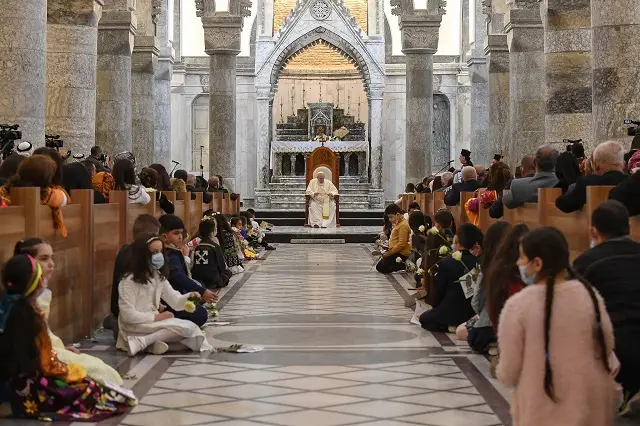
On March 17, 2013, Pope Francis appeared for the first time on the balcony of his future apartment in the Vatican to recite his first traditional Sunday Angelus prayer in front of the 150,000-strong crowd in St. Peter's Square. In it, he himself defines the three main directions of his ministry - to be in solidarity with the poor, to work for peace, and to defend God's creation, which, in addition to man, includes all living beings and all of nature.
Pope Francis was officially enthroned on 19 March 2013, the feast of Saint Joseph, patron saint of the Catholic Church, in St. Peter's Basilica. The liturgy in St. Peter's Square was attended by hundreds of thousands of people, representatives of 33 Christian churches and 132 governments and international organizations. During the ceremony, Francis received two papal attributes: the pallium (a white woolen sash embroidered with six crosses) and the "fisherman's ring", which is made for each pope. True to his taste for simple things, at his request his ring is not made of pure gold, but of silver with gold plating. On 7 April 2013 with a mass celebrated in the papal basilica of "St. John Lateran", Pope Francis officially takes on his other role - that of bishop of Rome.
Pope Francis's style is distinguished by its modesty - he does not live in the huge papal apartments in the Apostolic Palace, but in a modest apartment in the Vatican guest building. He also prefers to move around in a "Ford Focus" instead of the "Mercedes" traditional for his predecessors. He is an avid supporter of the Argentine football team "San Lorenzo", one of the largest and most popular clubs in the country, and is known for having used public transport in Buenos Aires for many years when he was archbishop there.
In his first year, Pope Francis was elected "Person of the Year" by the American magazine "Time" in 2013. The editorial staff of "Time" believes that it was the head of the Roman Catholic Church who had the greatest influence on world events during the year. The magazine's website states that the first pope from a country outside Europe in 1,200 years has begun to transform the church, which measures the change in centuries.
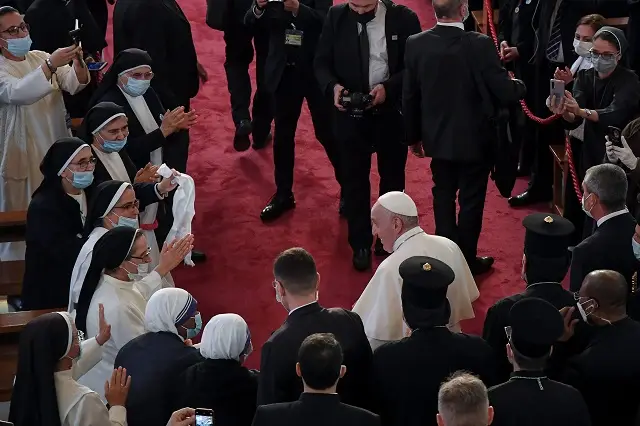
On July 5, 2013, the first encyclical of Pope Francis, entitled "Lumen fidei" (from Latin "The Light of Faith"), was officially presented in the Vatican. In it, he emphasizes that faith is a gift for everyone and a common good, leading to the creation of a home in which man can live together with all others. This gives reason to assume that the global problems of man and his natural environment will occupy a central place in the document prepared by the Pope, to be further developed in the spirit of his predecessors.
On June 18, 2015, at a press conference in the meeting room of the Synod of Bishops in the Vatican complex "Paul VI", Pope Francis's encyclical "Laudato si' ("Laudato si' - sulla cura della casa comune" - "Praise be to You - on the care of the common home") was presented. It is dedicated to the environment and in it Pope Francis calls on leaders from all over the world to act quickly in the fight against climate change.
On January 12, 2016 His first book, "The Name of God is Mercy", was presented, which is a 100-page conversation with the Italian journalist Andrea Tornielli. It was published in six languages - Italian, English, French, German, Portuguese and Spanish by 21 publishers in 86 countries and is dedicated to the extraordinary Holy Year of Mercy, declared by the Pope, which begins on December 8, 2015 and ends on November 20, 2016.
On April 8, 2016, the apostolic exhortation of Pope Francis, Amoris laetitia ("The Joy of Love" - Latin), dedicated to love and the family, was officially presented in the Vatican. This is a document prepared personally by the head of the Roman Catholic Church, which ranks third in importance in the hierarchy after the Apostolic Constitution and the Encyclical. This is the second apostolic exhortation of Pope Francis since his accession to the throne, after Evangelii Gaudium (“The Joy of the Gospel”), issued in November 2013. Both documents fall into the category of post-synodal exhortations, which each pope prepares on the basis of the proposals of the Synod of Bishops with the absolute right to accept, revise or ignore them. The exhortation Amoris laetitia concludes the Synod on the Family, which was the first convened by Pope Francis and consisted of two stages - an extraordinary assembly of bishops in October 2014 and an ordinary assembly in October 2015. It consists of 264 pages, divided into 9 chapters and 325 paragraphs, in which 30 topics are highlighted.
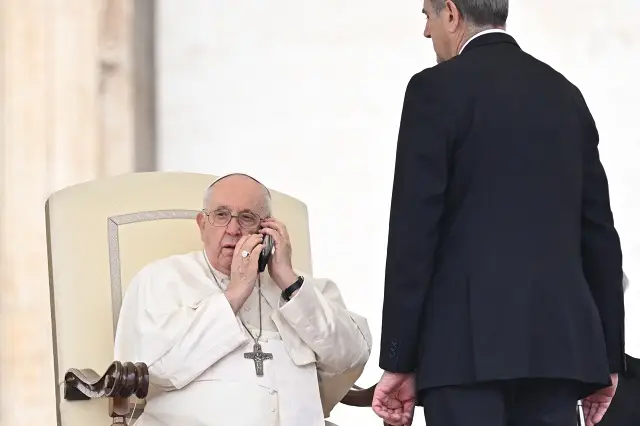
Over the years, Pope Francis has repeatedly undertaken charitable initiatives for the homeless, refugees, the needy and prisoners. On his initiative, shower cabins for the homeless have been installed near "St. Peter" Square. He has repeatedly visited prisons and washed the feet of prisoners in a traditional ceremony on Maundy Thursday before Easter, and has repeatedly emphasized that the mission of Christianity is to help the vulnerable and marginalized.
Pope Francis' Most Memorable Visits
On 8 July 2013, Pope Francis visited the Italian island of Lampedusa, where he met with migrants from Africa who are trying to cross the Mediterranean Sea in search of a better life. In a mass before 10,000 people gathered in the island's small stadium, Pope Francis explained that he had decided to make this unprecedented papal visit to Lampedusa to "pray, show compassion and awaken the conscience of the people so that what is happening will not happen again". According to the UN High Commissioner for Refugees, 40 migrants have died since the beginning of 2013 while trying to reach Italy from North Africa. In 2012, 500 people died in the same circumstances.
Pope Francis' first official visit is to Brazil from 22 to 28 July 2013. on the occasion of the 28th World Catholic Youth Day, which involves 400,000 young Catholics from 175 countries. In the closing mass on Copacabana Beach in Rio de Janeiro, in front of about 3 million young Catholics from all over the world and residents of the city, Pope Francis calls on young people to proclaim their faith without fear in all corners of the world, without making distinctions between people.
On May 25, 2014, Pope Francis met with Ecumenical Patriarch Bartholomew I in Jerusalem at the Basilica of the Holy Sepulchre. At the meeting, described as historic, the leaders of the Catholic and Orthodox churches signed a declaration calling for progress in the rapprochement of the two churches nearly ten centuries after the Great Schism between them. Pope Francis and Bartholomew I followed tradition by kneeling at the entrance to the basilica, the site where Christ is believed to have been crucified and then resurrected. In a speech on the Temple Mount in Jerusalem on the last day of his three-day visit to the Middle East, which took in Jordan, Palestine and Israel, Pope Francis called on Muslims, Christians and Jews to work together for justice and peace.
On 21 June 2014, Pope Francis arrived in the town of Cassano allo Ionio in Calabria (southern Italy) for a 9-hour visit focused on exposing the mafia and on unemployment, which particularly affects young people. There, he spoke behind closed doors to about 200 men and women in prison, many of whom are serving sentences for mafia-related crimes. This is Pope Francis' fourth visit to the country outside the diocese of Rome. In 2013, he visited Cagliari (Sardinia), where he condemned youth unemployment, Assisi in Umbria, where he honored Saint Francis of Assisi, and the island of Lampedusa, where he called for a fight against the "globalization of indifference" and for more rights for immigrants arriving by sea in Europe.
Albania is the country that Pope Francis has chosen for his first visit to Europe. In doing so, he is paying tribute to a church on the rise after a terrible dictatorship and to peaceful national dialogue between religions. During his 11-hour visit to Albania, he met with Albanian leaders, celebrated Mass in Tirana's Mother Teresa Square, greeted spiritual leaders at the Good Counsel University, gathered Catholic representatives for evening mass in the new cathedral, and visited the Bethania social center. about 20 km from Tirana, where he met with orphans and the disabled. The Pope justified his choice of Albania by saying that its inhabitants had managed to form a "government of national unity between Muslims, Orthodox and Catholics, with a balanced interreligious council" and that "this is the only country among the communist states that has included atheism in its constitution".
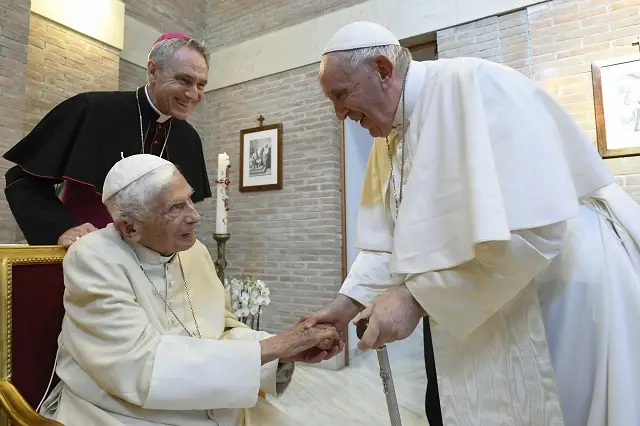
On November 25, 2014, Pope Francis made the shortest visit in the history of the Vatican - four hours. He visited Strasbourg, where he gave his first major speech to the European Parliament, focusing on important European issues such as unemployment and immigration. The Pope's visit to the European Parliament and the Council of Europe, on the occasion of the 65th anniversary of the founding of the organization, is more secular than religious. It is the first visit by a Pope to the Council of Europe since Pope John Paul II's visit on 8 October 1988.
In early 2015, Pope Francis set a record for the largest mass in history. On 18 January, between 6 and 7 million people flocked to Rizal Park in the Philippine capital, Manila, to attend Pope Francis' Mass, in which he addressed issues such as corruption, homeless children and the traditional family, and called on Filipinos to be missionaries for the church in Asia. The Holy Father was welcomed at the Manila airport by President Benigno Aquino, church leaders and nearly 400 children.
On February 12, 2016, at the José Martí International Airport in Havana, Cuba, Pope Francis had a historic meeting with Patriarch Kirill of Moscow and All Russia, who was visiting Cuba. The two signed a joint declaration in which they declared themselves in favor of Christian unity. This was the first meeting in history between the leaders of the Roman Catholic and Russian Orthodox Churches and was considered a significant step towards overcoming the 1,000-year schism between the Western and Eastern branches of Christianity. The Catholic and Orthodox Churches have been divided since the Great Schism of 1054.
Pope Francis' visit from February 3 to 5, 2019 to the United Arab Emirates (UAE) is the first papal visit to the Arabian Peninsula, the birthplace of Islam. He is visiting Abu Dhabi, the seat of the Apostolic Vicariate of the Catholic Church in Southern Arabia, which covers the UAE, Oman and Yemen. The visit has been described as historic, and Pope Francis believes it will help promote peace through interfaith dialogue. The UAE is home to about 1 million Catholic immigrants, many of whom are from the Philippines. On 5 February 2019, he celebrated an open-air Mass at the "Zayed Sports City" stadium in Abu Dhabi, the largest in the emirate, with nearly 135,000 people in attendance, with 50,000 remaining outside. It is the largest public Christian service on the Arabian Peninsula.
From 5 to 7 May 2019, Pope Francis is visiting Bulgaria, 17 years after Pope John Paul II's visit from 23 to 26 May 2002. Two days before his arrival, Pope Francis sent a video address to the Bulgarian people, in which he noted the great work of the holy brothers Cyril and Methodius. In his greeting to the Bulgarians, he emphasized that his apostolic journey to Bulgaria would be under the motto "Peace on Earth". This is the title of the encyclical written in 1963 by Pope John Twenty-third, called the Bulgarian Pope - Angelo Giuseppe Roncalli, who spent ten years of his mission in Bulgaria from 1924 to 1935 as the first apostolic legate. Pope Francis arrived in Sofia with a papal entourage of 35 people, which included the highest representatives of the Holy See, as well as nearly 70 journalists from world media, who traditionally cover the apostolic journeys of the Pope. Pope Francis' apostolic journey to Bulgaria is his 29th visit abroad since his election as head of the Roman Catholic Church in 2013.
From September 2 to 13, 2024, Pope Francis will make his 45th apostolic journey, the longest since the beginning of his pontificate. In 12 days, he will visit four countries: Indonesia, Papua New Guinea, East Timor and Singapore, delivering 12 speeches and 4 sermons, traveling on 7 flights.
